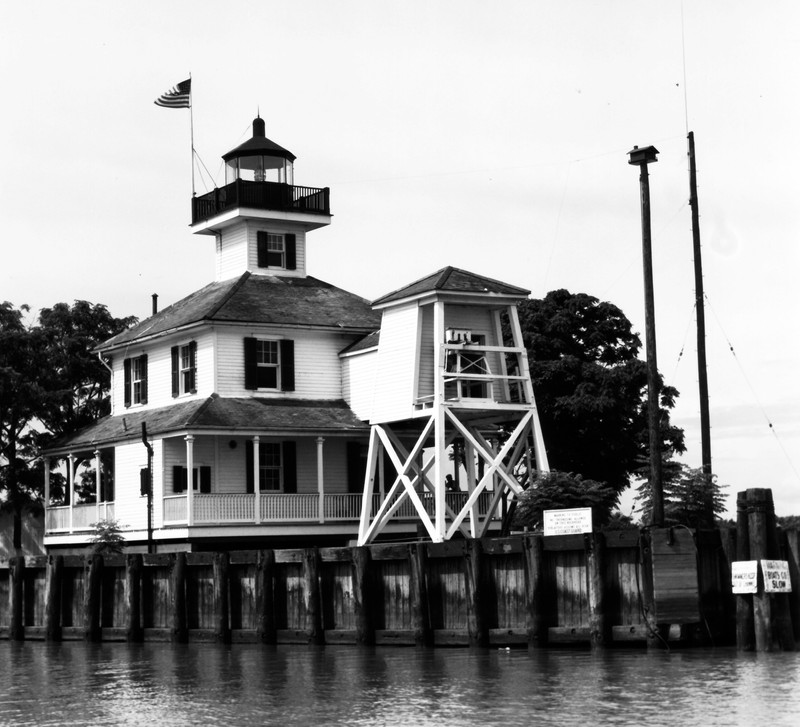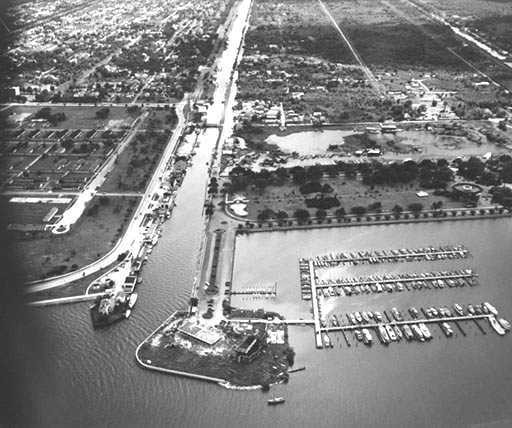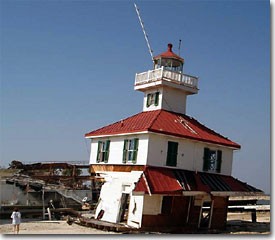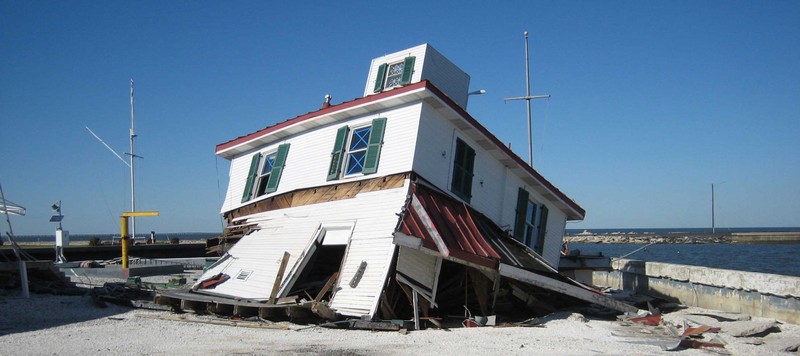This entry includes a walking tour! Take the tour.
Introduction
Author-Uploaded Audio
Listen to a narration of this entry's description by Kate Tannian.
Text-to-speech Audio
Images
1890 Lighthouse

1948 New Basin Canal

1890 Lighthouse after Hurricanes Katrina and Rita but before the cupola fell

1890 Lighthouse after the cupola fell

Backstory and Context
Author-Uploaded Audio
Listen to a narration of this entry's description by Kate Tannian.
Text-to-speech Audio
The lighthouse you see here today is actually the 4th lighthouse to stand on this site. The 1st was an octagonal cypress tower with a light on top built in 1839. By 1855, it began to sink and lean. It was decided a different type of structure might work better on the soft spongy ground. The 1855 lighthouse, was a single story square building lit by a Fresnel lens. The 2nd lighthouse was sturdy and might have lasted until today but, in 1880, the Southern Yacht relocated right across the New Basin Canal from the lighthouse. The yacht club building was beautiful but it was also two stories tall and blocked the light from the single story lighthouse. The Lighthouse Board decided to raise the 1855 lighthouse to make room for a taller structure. The 3rd lighthouse was a two story wedding cake design built on the ground but built up taller than the Southern Yacht Club so the light could be seen over the water. The 1890 lighthouse stood over 100 years until Hurricanes Katrina and Rita knocked it down in 2005. LPBF obtained the lease to rebuild the lighthouse and turn it into an education center and museum. A Perfect place to bring people to learn about the lake and coast. LPBF dismantled the 1890 lighthouse in 2007, stored the pieces in a warehouse and began fundraising. The 4th lighthouse you see today was completed in the spring of 2013. The new lighthouse is built 19 feet off the ground for hurricane protection. It is a replica of the 1890 lighthouse built using about 50% original material. The only difference is the placement of the bell tower. It was moved from the north side to the west side to be able to put an elevator style lift inside the tower. The light in the cupola has an LED lamp with a Fresnel lens housed inside a second protective lens. The light travels 9 miles into Lake Pontchartrain. It goes on at dusk and off at dawn every night with a specific flash: 3 flashes and a pause in 5 seconds. Continue with the tour to hear more about the Fresnel lens as well as our most famous light keeper, Margaret Norvell.
